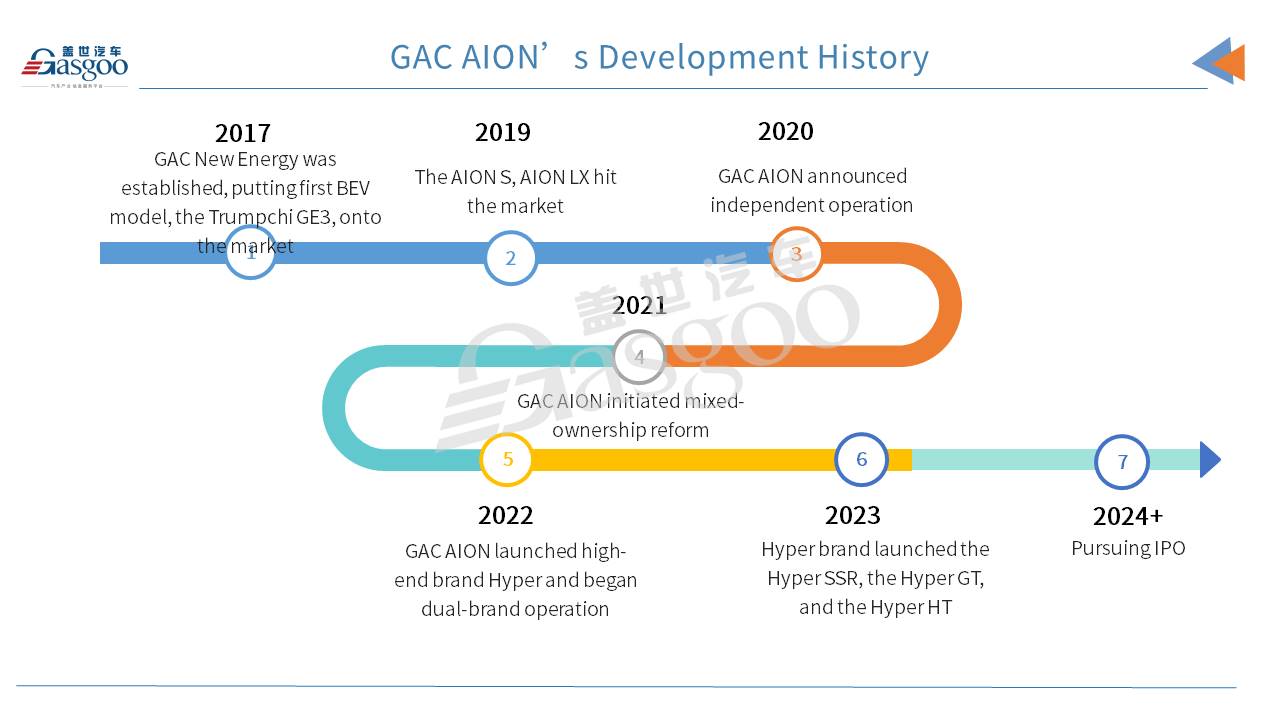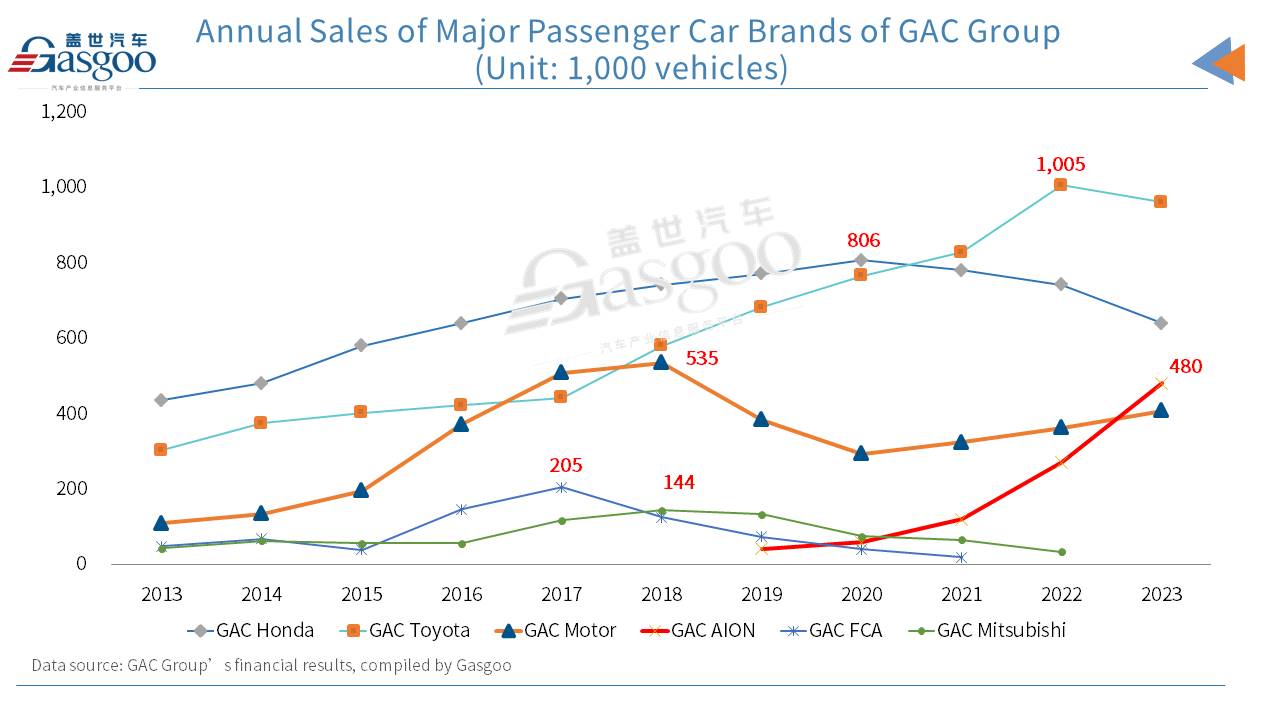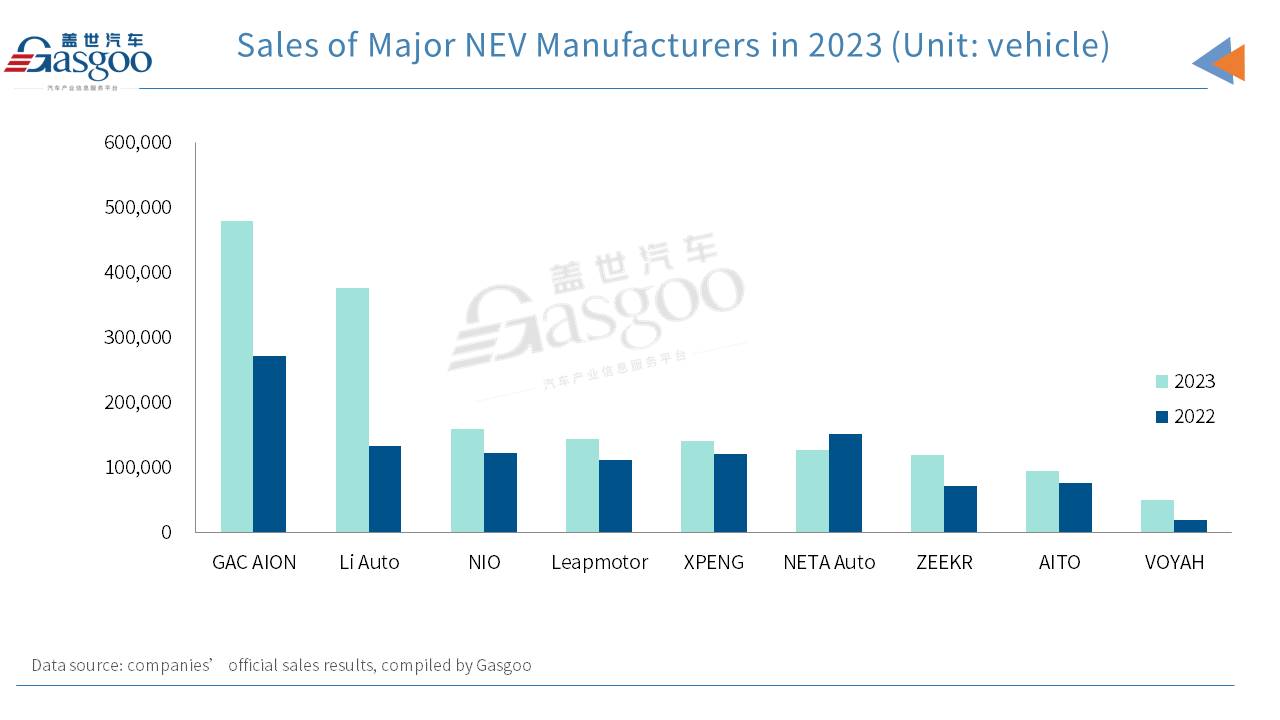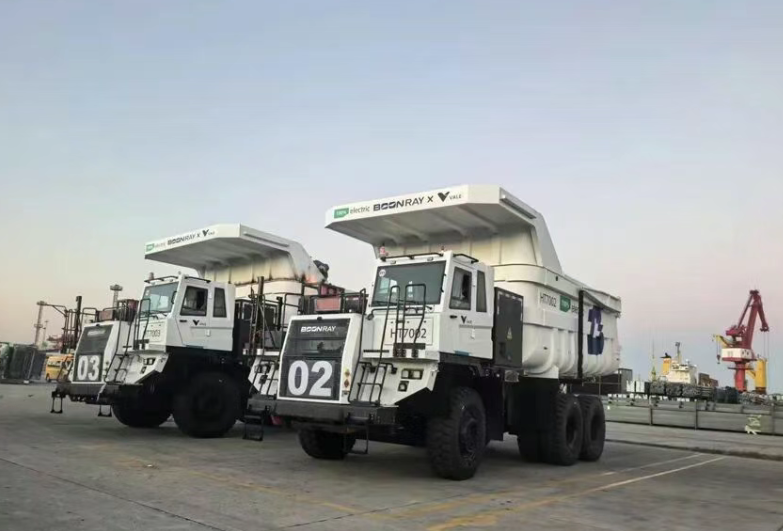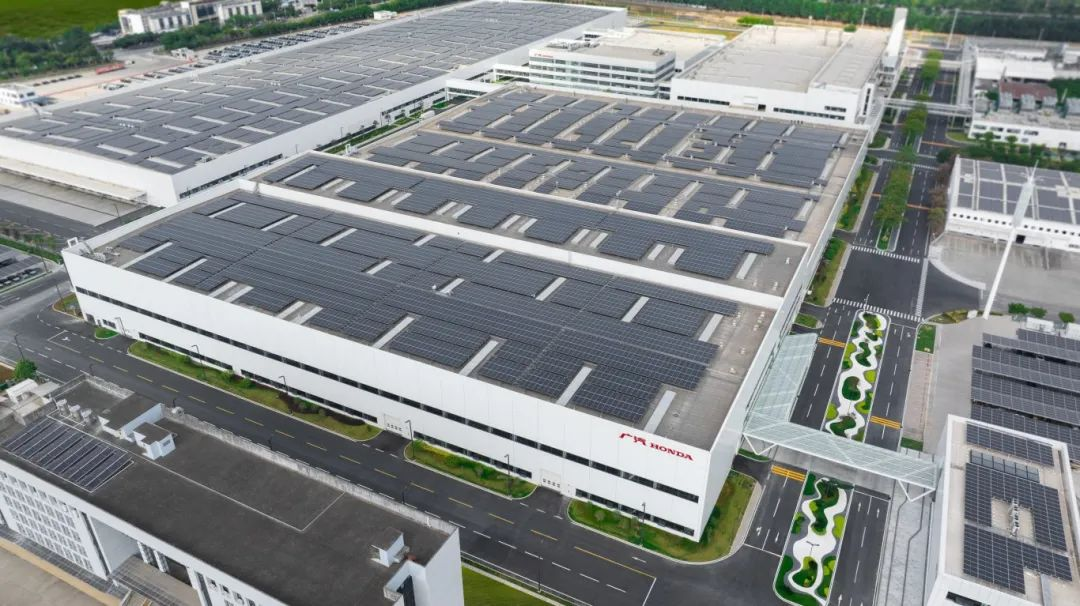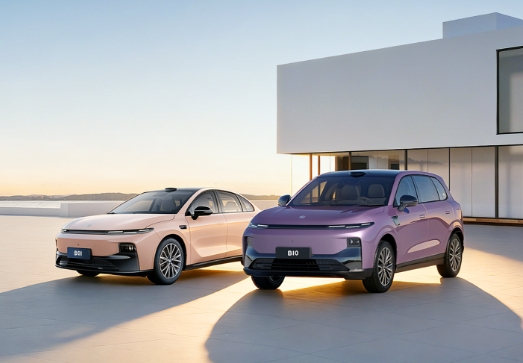In March this year, the flying car of Guangzhou Automobile Group Co.Ltd (GAC), GOVE (standing for GAC, On the Go, Vertical, and EV), conducted a flight demonstration over the downtown of Guangzhou city, successfully completing its first flight validation in a complex urban low-altitude environment. According to the plan, GAC Group aims to offer multi-layered smart mobility services across the Guangdong-Hong Kong-Macao Greater Bay Area by 2027.
The flying car serves as a key in GAC's pursuit of innovation and its tech-driven blueprint aiming for 1 trillion RMB in revenue. In recent years, the group has been diving deep into the R&D of core technologies for intelligent connected vehicles (ICVs) and new energy vehicles (NEVs), and building up a strong industrial chain. These efforts have yielded fruitful results, with overall sales steadily climbing.
Hi welcome to Gasgoo. In this episode of the Wheels of Change: Stories of Chinese Auto Giants series, we will explore the growth journey of Guangzhou Automobile Group Co.Ltd (GAC).
Starting with joint ventures, but also taking great care in building self-owned brands
Much like many other Chinese state-owned automakers, GAC Group's journey in auto industry also started with joint ventures.
In 1997 GAC, whose full name is Guangzhou Automobile Group Co., Ltd., was established. In July of the following year, it teamed up with Honda Motor to establish GAC Honda Automobile Company Limited (GAC Honda), marking the beginning of its joint-venture endeavors.
Over the next decade, GAC allied with global giants such as Toyota Motor, Fiat, and Mitsubishi to create joint ventures like GAC Toyota, GAC Fiat, and GAC Mitsubishi. Through these collaborations, GAC saw its overall sales climb up steadily. In 2013, both of its annual output and sales surpassed the million-unit mark, with its four major joint ventures grabbing over 80% share. In 2017, GAC Group's annual sales surged past the 2-million-unit mark, with joint ventures accounting for 73% of the total sales.
However, as for GAC Group's self-owned brands, their development journey essentially began in 2005. That year, GAC Group held a strategic seminar to discuss major initiatives in independent R&D as well as building wholly-owned brands.
In 2006, GAC Group formally set up the GAC Automotive Engineering Institute to promote complete vehicle development under its own brands. By July 2008, GAC Group had set up GAC Motor on its own, marking the official start of GAC's venture into own-branded passenger cars. On September 3, 2010, GAC Motor celebrated the completion of its car plant in Panyu district, Guangzhou city. From then on, GAC's wholly-owned brand had gone into a large-scale production phase.
GAC made another significant move in 2010 by getting listed on the Hong Kong Stock Exchange, officially entering the capital market and becoming the Chinese Mainland's second-largest automobile company listed in Hong Kong. Two years later, GAC was listed on the Shanghai Stock Exchange.
Under the Trumpchi brand, GAC Motor launched a series of new models, like the Trumpchi GS5, GA6, GS4, GA8, GS8, and GM8, enhancing its product matrix to cover sedans, SUVs, and MPVs. These efforts paid off big time, with its annual sales surpassing 500,000 units in both 2017 and 2018. As a main sales contributor, the Trumpchi GS4, zoomed past the one-million-unit cumulative sales mark in just four years since its market launch in 2015.
As GAC Motor was on the rise, China's new energy vehicle industry was also thriving. In 2017, GAC Group tapped into the new energy vehicle field by setting up GAC New Energy Automobile Company Limited in 2017.
At the end of that year, GAC Group, GAC New Energy, NIO Co., Ltd., and the Hubei Yangtze River NIO New Energy Industrial Development Fund came together to form GAC-NIO New Energy Vehicle Technology Co., Ltd., which would eventually be known as HYCAN Automobile.
In the following years, GAC continued to deepen the development of its wholly-owned passenger car brands, while rapidly advancing its transition towards new energy vehicles. The Auto Guangzhou 2020 was a landmark event, where GAC New Energy was rebranded as GAC AION and declared its brand independence.
Starting in 2021, powered by the joint efforts of GAC Motor and GAC AION, GAC Group embarked on its second phase of growth. By 2023, annual sales for both GAC Motor and GAC AION soared past the 400,000-unit mark, representing more than 35% of the group's total sales. Notably, the sales of new energy vehicles accounted for around 58% of GAC's wholly-owned brands’ sales, exceeding 500,000 units.
Then, GAC sets its sights on the "1578" development outlines unveiled at the end of 2022, aiming to realize annual revenues of 1 trillion RMB, production and sales volume of 4.75 million vehicles, and pre-tax profits of 100 billion RMB by 2030.
While joint ventures waning, self-owned brands flourishing
In the era of oil-fueled vehicles, GAC carved out a strong market presence and solidified its position through its partnership of joint-venture brands. Yet, as the auto industry shifts towards electrification and intelligence, GAC's joint ventures have begun to lag behind.
This downturn first hit GAC Fiat Chrysler (GAC FCA). Driven by the sustained success of Jeep brand's China-made models like the Cherokee, Renegade, and Compass, GAC FCA's production and sales volumes in China both surpassed 200,000 units in 2017, jumping over 40% from the previous year. The success, however, was short-lived. By 2018, GAC FCA's sales had plummeted to 125,000 units, facing a nearly 40% decrease year-on-year. Over the next few years, its sales continued to free-fall, leading to the joint venture's closure in July 2022. Besides, GAC FCA's Panyu plant in Guangzhou city was then transferred to GAC AION.
GAC Mitsubishi reached its peak in China in 2018. That year, its new vehicle sales hit 144,000 units, the highest-ever volume since the joint venture began operations. After the joint venture was formed in 2012, GAC Mitsubishi introduced models like the ASX, Pajero, and Pajero Sport. Yet, the market response was tepid until the third-generation Outlander was introduced in 2016, which dramatically boosted sales. However, the heavy reliance on the single model meant that the success was not to last. After reaching its sales peak in 2018, GAC Mitsubishi’s performance declined rapidly, with annual sales dropping to only 33,600 units by 2022.
Actually, in October 2023, the GAC Group's board passed a restructuring proposal for GAC Mitsubishi. This move, along with the recent name change, meant that GAC Mitsubishi had officially wrapped up its 12-year joint venture journey, and its production base in Hunan province has also been passed on to GAC AION.
In contrast, GAC Toyota and GAC Honda, as the bedrock of GAC's joint ventures’ businesses and even the entire GAC Group, have shown more resilience. GAC Toyota, in particular, has maintained steady growth over the past few years, despite the uncertainties brought on by the pandemic, fierce competition from China’s domestic brands, and the fast transition to new energy vehicles in China's auto market, even breaking the one-million-unit annual sales mark in 2022.
GAC Honda has also been a consistent performer, with annual sales steadily standing above 600,000 units, also anchoring GAC Group's profitability.
Despite a slight sales dip from these two major joint ventures in 2023, their foundational strength remains undiminished. Meanwhile, the rise of GAC's own-brand business has brought the group's total sales to a new high of 2.5 million units, with GAC AION standing out.
In 2023, GAC AION recorded yearly sales of 480,000 vehicles, marking a 77% surge year-over-year. This achievement even surpassed GAC Motor's annual sales. GAC AION thus broke through the one-million-unit mark in cumulative production and sales in just 4 years and 8 months.
Riding high on the success, GAC AION is ambitious to sell 800,000 vehicles in 2024, aiming for a year-on-year leap of 66.7%.
On the other hand, going upscale remains another strategic focus for GAC AION.
Expanding beyond the AION brand, GAC AION launched the premium brand Hyper in September 2022, unveiling a dual-brand strategy that combines both AION and Hyper. In the second half of 2023, it rolled out three new models under the Hyper brand: the Hyper GT, SSR, and HT.
Compared to GAC AION's stellar performance, GAC Motor has been slightly overshadowed by the fierce competition in the compact SUV sector, which weakened the Trumpchi GS4's competitiveness. This challenge resulted in a decrease in Trumpchi's sales in 2018 and 2019, briefly dragging down GAC Group's overall figures.
Nevertheless, the Trumpchi brand has seen a turnaround, thanks to updates and tech enhancements in key models like the Trumpchi GS3 and GS4, robust sales of MPVs like the M6 and M8, and the introduction of new models such as the EMPOW, EMKOO, and the E9 PHEV, stabilizing Trumpchi's sales over the last two years.
In 2023, GAC Motor's sales rebounded to over 400,000 units, rising 12.1% over a year ago. Although still below its peak level in 2018, the company is on track for further recovery.
GAC Motor, GAC AION's transition in new energy vehicle era
Since 2021, GAC has entered a new phase of sales growth.
Behind this surge, it's less about the combined push from GAC AION and GAC Motor, which together contributed over 500,000 units to sales growth over the past three years, but more about the own-brand business nailing the rhythm of the new energy vehicle industry's development. After all, of that half a million vehicles of growth, 420,000 units were contributed by GAC AION.
Despite GAC New Energy's establishment in 2017, GAC Group’s foray into the new energy vehicle domain dates back to 2010, when GAC Motor unveiled its first own-brand mid-to-high-end sedan, Trumpchi, along with its battery-electric counterpart riding on the Trumpchi platform at the Auto Guangzhou 2010.
At the Auto Shanghai 2011, GAC Group officially launched its new energy vehicle development strategy and goals for the "12th Five-Year Plan" period, alongside the debut of the Trumpchi 4WD Hybrid sedan model, and the all-electric Trumpchi.
It's clear that GAC has long pursued a multi-faceted approach in the new energy passenger vehicle sector, including all-electric, plug-in hybrid electric, and range-extended electric vehicles.
In 2014, GAC launched the mid-to-high-end range-extended electric sedan model, the Trumpchi GA5 REV. Following that, GAC introduced several new energy models, including the Trumpchi GS4 EV, GA3S PHEV, GA5 PHEV, GS4 PHEV, GA6 PHEV, and GE3.

Photo credit: GAC Group
However, the early new energy vehicles under the Trumpchi brand were mainly built on existing oil-fueled car platforms or models, and initially, they did not significantly impact the market. It wasn’t until 2017, when GAC Group officially established GAC New Energy and launched the GEP (GAC Electric Platform) dedicated to full-electric vehicles, that GAC’s self-made new energy vehicles began to rise on volume. In 2018, GAC New Energy’s annual sales surpassed 20,000 vehicles for the first time, surging 282% over the previous year.
In 2019, GAC New Energy launched the new-generation platform GEP2.0, which provided comprehensive upgrades over the GEP 1.0 in space utilization, energy efficiency, power performance, and safety. The AION S, the first strategic model built on this platform, enables a maximum range of 510km. Thanks to its competitive pricing, ample space, and the support from the ONTIME mobility service platform, the AION S quickly became a well-received product in the B2B (business-to-business) market.
According to data compiled by Gasgoo Auto Research Institute, in 2020, about 36,000 vehicles under GAC AION were sold in the taxi and car leasing markets, accounting for 60% of that year's total sales. Even in 2021, when the AION Y model was launched, GAC AION introduced a version tailored for ride-hailing services.
Over the past two years, GAC AION has been working to enhance its presence in the consumer market by launching multiple upgraded models, such as the AION Y Plus, the AION S Plus, and the AION V Plus.
Unlike GAC AION, which focuses on battery electric vehicles, GAC Motor targets the hybrid vehicle route in its transformation towards new energy vehicles. In 2021, GAC Motor announced its "XEV+ICV" dual-core strategy to facilitate its brand transformation, where XEV encompasses hybrid electric vehicles, plug-in hybrid electric vehicles, and range-extended electric vehicles, and ICV represents intelligent connected vehicles.

Photo credit: GAC Group
In April 2022, GAC Motor launched a new hybrid technology brand called "Mega Waves Hybrid". This initiative was spearheaded through combined efforts of in-house R&D and open collaboration, resulting in two distinct technology paths: the one is the proprietary GMC dual-motor series-parallel hybrid system, and the other is the hybrid system based on the “GAC 2.0TM engine + Toyota THS system.”
Following this, GAC Motor rolled out several models powered the Mega Waves Hybrid system, including the second-generation Trumpchi GS8 HEV, the EMPOW Hybrid, the EMKOO Hybrid, and the M8 Grandmaster Hybrid.
In April 2023, GAC Group further clarified its future roadmap for new energy vehicles by unveiling the NEXT Plan, which stands for New EV + XEV Transition. This plan signifies GAC's commitment to navigating the multi-energy era by advancing the two-wheel drive route of "EV+ICV" (electric + intelligent) and "XEV+ICV" (hybrid + intelligent). While maintaining GAC AION's leadership in EVs, it aims to transition Trumpchi towards XEVs, including PHEVs, REVs, and HEVs.
Guided by the NEXT plan, GAC Trumpchi has upgraded the Mega Waves Hybrid to Trumpchi i-GTEC, along with the collective launch of three PHEV models – the Trumpchi E9, ES9, and E8.
Meanwhile, GAC AION launched the new-generation high-end platform dedicated to BEVs, the AEP 3.0, along with three new models riding on this platform: the Hyper GT, the Hyper SSR, and the Hyper HT.
As disclosed by Mr. Gu Huinan, General Manager of GAC AION, the Hyper brand plans to introduce its fourth production model and aims to expand its sales network to roughly 200 outlets in 2024.







